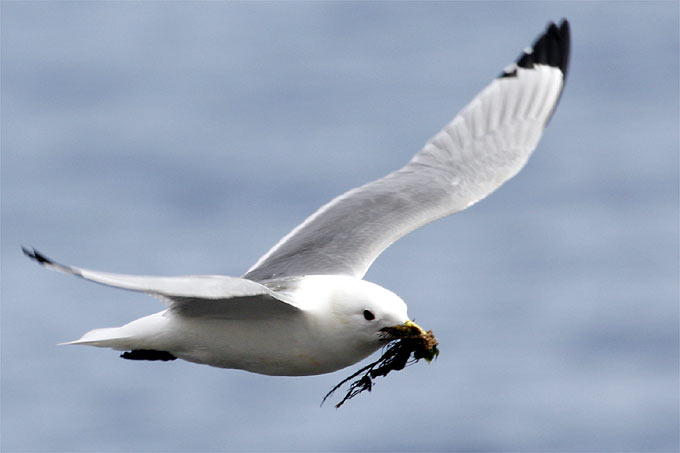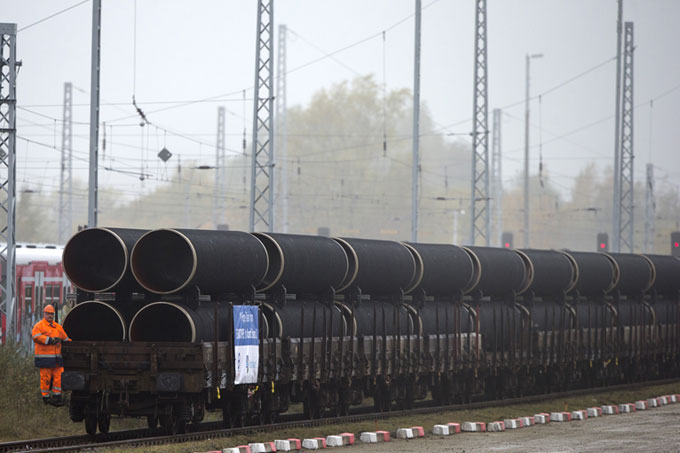How can offshore wind expansion become environmentally friendly?
NABU study reveals potential areas, conflicts and solutions

Construction of the Baltic 1 offshore wind farm - photo: NABU/ Andreas Fußer
Marine spatial planning (MSP) identifies where offshore wind farms can be built. However, in Germany, MSP has largely disregarded the carrying capacity of marine ecosystems. This is contrary to the EU MSP Directive, which mandates that an ecosystem-based approach be applied in MSP. Furthermore, this is contrary to our knowledge that healthy seas, as carbon sinks, are vital allies in the fight against the climate crisis. Instead, MSP in Germany has focused on existing maritime uses and squeezed wind farms into the remaining areas, thereby pitting climate protection against marine conservation.
NABU study prioritises offshore wind areas based on nature conservation criteria
The key to reconciling climate protection and marine conservation lies in:
- Smart, nature-friendly site selection
- Thorough environmental assessments to reliably estimate the impacts of development
- Effective avoidance and mitigation measures to reduce negative effects as much as possible.
A study commissioned by NABU and addressing these issues has now been published (an English summary is available). Its goal is to identify potentially suitable areas for offshore wind energy from a nature conservation perspective within the Exclusive Economic Zone (EEZ) of the German North and Baltic Seas. It also aims to highlight specific conflicts and propose solutions. The German EEZ was classified using a traffic light system:

Traffic light ranking of the German North and Baltic Seas. Shaded areas represent protected areas, blue and green borders mark planned offshore wind parks.
- Green = areas more environmentally compatible with wind farms, although several sensitive species may still be affected, but no highly sensitive species (the study assigns higher weights to highly sensitive species).
- Yellow = areas partially environmentally compatible, including highly sensitive species, but impacts are limited and can be mitigated.
- Red = areas not environmentally compatible, including highly sensitive species, with numerous impacts that cannot be mitigated.
Methodology
For the study, the consultants BioConsult Schuchardt & Scholle and Biota analysed extensive datasets on the distribution of 14 seabird species, harbour porpoises, and the occurrence of five biotope types. The environmental compatibility of offshore areas was then assessed based on the sensitivity of individual species or biotopes to wind farms, in combination with additional ecological site functions, such as breeding areas.
The study differentiates between the construction and operation phases, given their varying impacts and requirement of different mitigation measures. This process initially results in "green" and "non-green" areas. Depending on the number of mitigable and unavoidable impacts, the non-green areas are further categorized as "yellow" or "red" areas. Protected areas with buffer zones are also excluded as unsuitable for wind farms.
Which species and habitat types were considered?
Seabirds:
- Red-throated and black-throated divers
- Common guillemot and black guillemot
- Northern gannet
- Northern fulmar
- Common and velvet scoter
- Long-tailed duck
- Black-legged kittiwake
- Little, herring, lesser black-backed, and great black-backed gull
Marine mammals:
- Harbour porpoise
Protected habitat types:
- Sandbanks and reefs
- Sublittoral species-rich coarse sediments
- Sea-pen and burrowing megafauna communities
- Aphotic muddy sediment dominated by ocean quahog (Arctica islandica)
Implications of the study
The results indicate that climate protection and marine conservation must be better integrated in offshore wind development by excluding critical areas for nature. In Germany, the Federal Maritime and Hydrographic Agency (BSH) is primarily responsible for this task. The BSH develops the German marine spatial plan and spatial development plans, which determine if and when an area might be developed.

The NABU study also analysed impacts of offshore wind farms on the black-legged kittiwake - photo: Frank Derer
According to the study, areas around the “Sylt Outer Reef - Eastern German Bight” Marine Protected Area (MPA) should be kept free from wind energy. During the German MSP negotiations and other regulatory processes NABU has repeatedly called for buffer zones to improve the protection of this MPA, which is particularly sensitive to offshore wind. The new “traffic light” study illustrates not only that such buffer zones are not sufficient, but that the designated wind farms close to the MPA are highly unsuitable. Instead, areas in the south-west stretching from the glacial valley of the river Elbe to the shipping route “SN10” should be prioritised for offshore wind. Here there is potential for replacing those areas from around the Sylt Outer Reef.
In general, the study recommends that spatial allocation in our seas needs to become more adaptive and flexible, rather than maintaining today’s rigid framework. This is a task for the next iteration of Germany’s marine spatial plan to address and would require:
- other user groups (such as shipping) to make space for additional wind areas.
- joint overlapping use of a particular area by different sectors.
- swapping areas between different user groups to reduce ecological impacts.
Nevertheless, it appears unlikely that all currently foreseen uses as well as the targeted 70 GW offshore wind capacity can be installed at sea in a manner that is environmentally sustainable. It is evident that higher spatial efficiency is needed. The energy generated per unit area must increase to ensure that sufficient space for protected species and habitats is available. The government urgently needs to establish an adequate legislative framework, while industry must enhance spatial efficiency through technical innovation.
NABU calls for:
- Excluding red areas from offshore wind development given the conflict with nature conservation.
- Rigorously applying ecological criteria during the development of the next marine spatial plan and other processes of spatial allocation at sea, as demonstrated by the NABU study.
- The offshore industry should actively pursue technical innovations to extract more power from already allocated areas, thereby reducing the need for additional space for energy generation.
- Green areas are not a carte blanche for development; species and habitats are also negatively affected here, and interventions must be carefully assessed and offset.
Downloads
RELATED TOPICS
The ecology of the Baltic Sea is in bad shape, as typical habitats are under threat or have already completely disappeared. According to the current plans, Nord Stream 2 will pass through five protected areas, despite there being no urgent need for an increased gas supply. more →
Rising greenhouse gas emissions and heavy air pollutions remain the gravest problems of the cruise ship industry. NABU's annual cruise ship ranking, presented on 28 June in Hamburg, delivers renewed evidence that change is needed. But hope is on the horizon. more →
The Baltic Sea is a very special marine environment – a fascinating world that features both fresh and saltwater systems. Join us for a virtual dive to the mysterious underwater world and experience its diversity and fragility. more →



